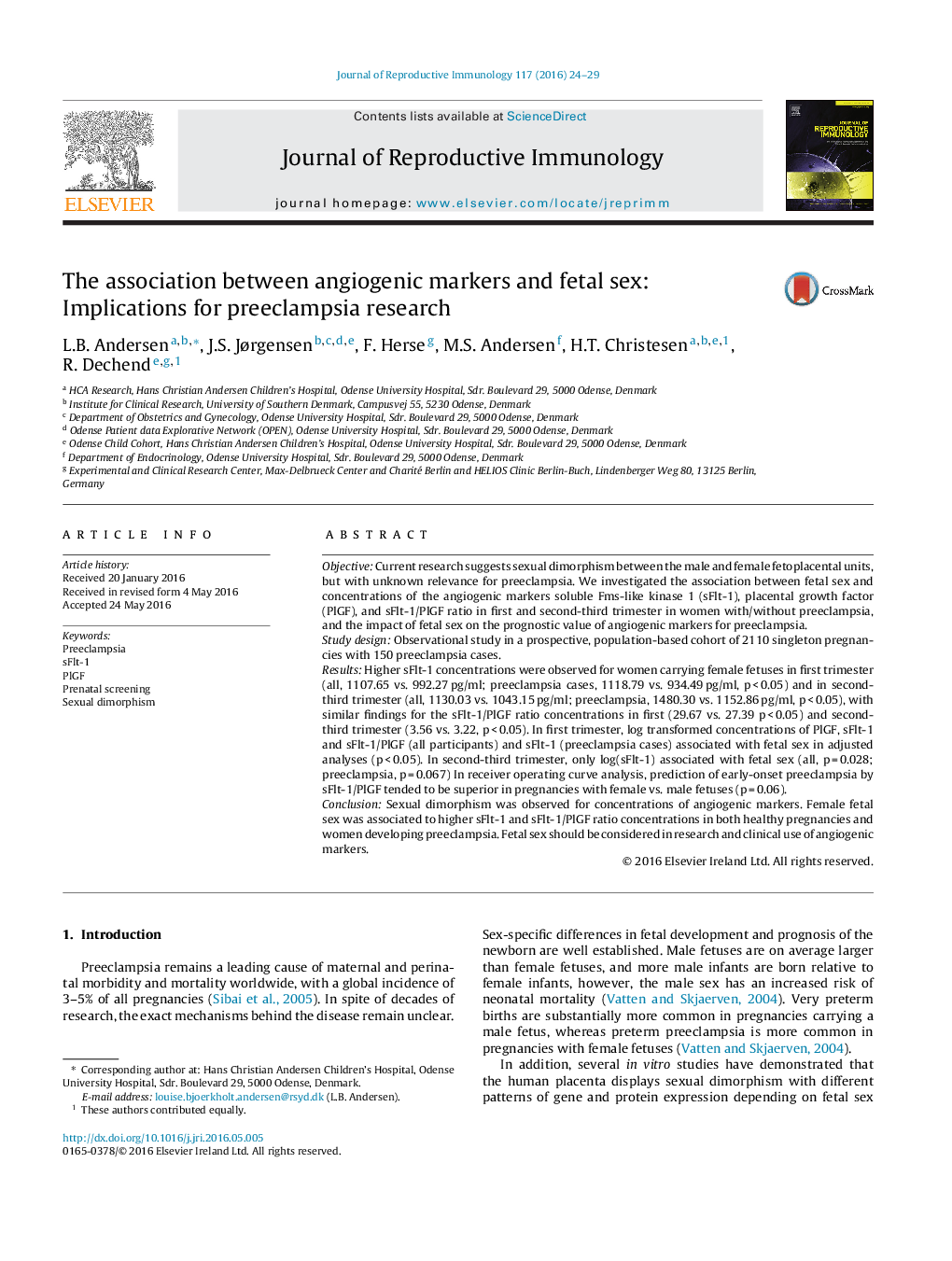| Article ID | Journal | Published Year | Pages | File Type |
|---|---|---|---|---|
| 6187805 | Journal of Reproductive Immunology | 2016 | 6 Pages |
â¢In a pregnancy cohort, angiogenic marker concentrations displayed sexual dimorphism.â¢Female fetal sex was associated to higher sFlt-1 and sFlt-1/PlGF concentrations.â¢Fetal sex should be considered in research and clinical use of angiogenic markers.
ObjectiveCurrent research suggests sexual dimorphism between the male and female fetoplacental units, but with unknown relevance for preeclampsia. We investigated the association between fetal sex and concentrations of the angiogenic markers soluble Fms-like kinase 1 (sFlt-1), placental growth factor (PlGF), and sFlt-1/PlGF ratio in first and second-third trimester in women with/without preeclampsia, and the impact of fetal sex on the prognostic value of angiogenic markers for preeclampsia.Study designObservational study in a prospective, population-based cohort of 2110 singleton pregnancies with 150 preeclampsia cases.ResultsHigher sFlt-1 concentrations were observed for women carrying female fetuses in first trimester (all, 1107.65 vs. 992.27 pg/ml; preeclampsia cases, 1118.79 vs. 934.49 pg/ml, p < 0.05) and in second-third trimester (all, 1130.03 vs. 1043.15 pg/ml; preeclampsia, 1480.30 vs. 1152.86 pg/ml, p < 0.05), with similar findings for the sFlt-1/PlGF ratio concentrations in first (29.67 vs. 27.39 p < 0.05) and second-third trimester (3.56 vs. 3.22, p < 0.05). In first trimester, log transformed concentrations of PlGF, sFlt-1 and sFlt-1/PlGF (all participants) and sFlt-1 (preeclampsia cases) associated with fetal sex in adjusted analyses (p < 0.05). In second-third trimester, only log(sFlt-1) associated with fetal sex (all, p = 0.028; preeclampsia, p = 0.067) In receiver operating curve analysis, prediction of early-onset preeclampsia by sFlt-1/PlGF tended to be superior in pregnancies with female vs. male fetuses (p = 0.06).ConclusionSexual dimorphism was observed for concentrations of angiogenic markers. Female fetal sex was associated to higher sFlt-1 and sFlt-1/PlGF ratio concentrations in both healthy pregnancies and women developing preeclampsia. Fetal sex should be considered in research and clinical use of angiogenic markers.
Graphical abstractDownload high-res image (97KB)Download full-size image
